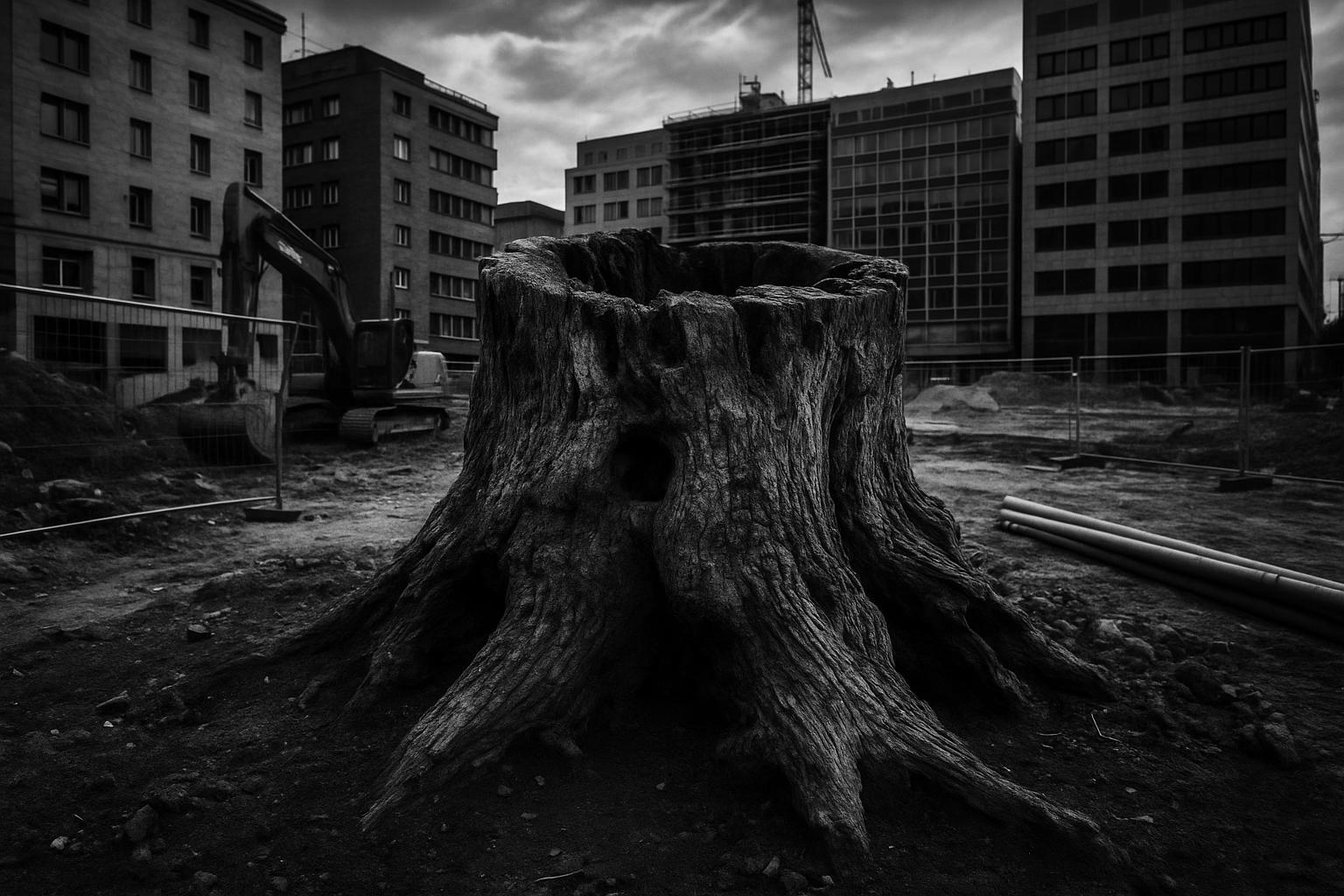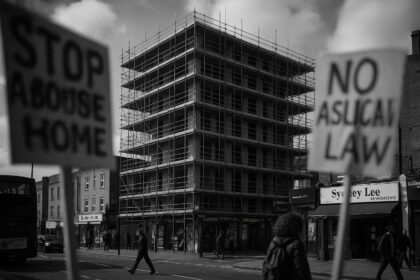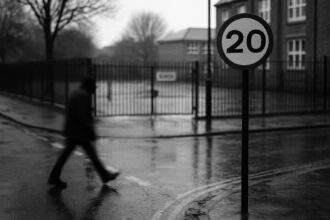The London Assembly’s campaign for tougher safeguards on trees over 100 years old is being criticised for prioritising preservation over practical urban growth and housing needs, threatening to complicate development and economic progress in the capital.
The London Assembly’s call to the UK government to impose tougher protections for all trees over 100 years old exposes a misguided focus on superficial environmental gestures rather than addressing the root issues of urban planning and property rights. The recent obsession with safeguarding ancient trees—those ancient relics of our natural and cultural heritage—ignores the broader economic and developmental needs of London’s communities. The push to rigidly protect these natural assets, exemplified by the felling of a 500-year-old oak in Enfield and the iconic Sycamore Gap in Northumberland, highlights an outdated approach that places preservation over practicality and local needs.
City Hall’s desire to expand the tree canopy by 10% by 2050, while laudable on paper, risks becoming another layer of bureaucratic red tape that hampers sensible urban development. These trees, often found in private land and subject to private investment, should not be immune from sensible land use principles. Instead of prioritizing relic trees that sometimes block necessary infrastructure or housing projects, the focus should be on ensuring sustainable, balanced growth that benefits all Londoners—not just environmental extremists and green activists.
The government’s independent report, proposing to define ‘important trees’ and create a national database, sounds increasingly like a bureaucratic straw man designed to distract from the practical needs of London’s development. Stricter criminal penalties for tree destruction and more rigorous Tree Preservation Orders may sound good politically but threaten to complicate everyday property rights and hinder regeneration efforts crucial for the city’s economic vitality. Enhanced regulation often leads to delays and increased costs for developers, undermining the city’s ability to adapt and thrive.
Leaders from institutions like Kew Gardens advocate learning from countries like Sweden, but their emphasis on imported models misses the point about London’s unique legal and social landscape. Rigid protections, coupled with drought and disease challenges that mature city trees face, should encourage more pragmatic strategies—such as targeted maintenance and community-led urban forestry—rather than reactive bans on development. Public outrage over the loss of ancient trees is understandable, but it risks conflating heritage with obstructionism.
Beyond individual trees, threats to green spaces like Gorne Wood in Brockley underscore the broader issue: the relentless push for development that often sacrifices natural heritage on the altar of supposed environmental virtue. Citizens raising funds to protect ancient woodland highlight community resilience, yet they also reveal the failing of current policies which often lean towards neglect rather than proactive management.
In sum, these developments underscore a dangerous trend—prioritizing preservation at the expense of progress, and ceding urban development to the whims of environmental dogma. True protection of London’s future natural landscapes requires balanced policies that respect property rights, support responsible growth, and recognize that the sustainable management of our green spaces is about thoughtful integration, not isolation. This obsessive focus on relic protection risks hindering London’s economic recovery and the everyday needs of its residents.
Source: Noah Wire Services
- https://www.standard.co.uk/news/london/enfield-oak-sycamore-gap-sadiq-khan-trees-b1238658.html – Please view link – unable to able to access data
- https://www.standard.co.uk/news/london/enfield-oak-sycamore-gap-sadiq-khan-trees-b1238658.html – City Hall has called for stronger protections for London’s ancient trees following the felling of a 500-year-old oak in Enfield and the Sycamore Gap tree in Northumberland. The London Assembly has written to the government urging enhanced safeguards for all trees over 100 years old in the capital, highlighting their vital role in local ecosystems and biodiversity. The Mayor of London, Sadiq Khan, has set targets to increase canopy cover by 10% by 2050, necessitating the protection of existing mature and ancient trees.
- https://www.theguardian.com/environment/2025/apr/16/uk-government-report-calls-for-taskforce-to-save-englands-historic-trees – A UK government-commissioned report recommends creating a taskforce to define and protect England’s historic trees. The report suggests changing sentencing guidelines to impose tougher penalties on those who destroy important trees and proposes a database of such trees with automatic protections. This follows public outcry over the felling of a 500-year-old oak in Enfield, which lacked specific legal protections, as most ancient and culturally important trees do.
- https://www.theplanner.co.uk/2025/04/23/government-urged-step-protection-important-trees – An independent report urges the UK government to bolster legal protections for ancient and culturally significant trees. Commissioned after the felling of the Sycamore Gap tree in 2023, the study recommends imposing tougher criminal penalties for those who destroy important trees and strengthening Tree Preservation Orders. It also calls for a task force to define ‘important trees’ and prepare an action plan for their protection, highlighting the need for increased investment to safeguard these vital natural assets.
- https://www.bbc.com/news/articles/cd620dnp8qdo – A Kew Gardens expert has suggested that London should adopt practices from Sweden to better protect its trees from droughts and diseases. Kevin Martin, head of tree collections and arboriculture at Kew, noted that many species currently planted in urban environments are not suited to city life. He highlighted the public outcry over the felling of an ancient oak in Enfield and the Sycamore Gap tree in Northumberland as evidence of increased public interest in tree protection.
- https://www.bbc.com/news/uk-england-london-64467804 – Residents in Brockley, Lewisham, have raised over £116,000 to protect Gorne Wood, an ancient woodland home to endangered wildlife. The funds will be used to purchase a compulsory purchase order from the council, preventing development. The Woodland Trust includes Gorne Wood in its top 10 green spaces in London that need rescuing, emphasizing the value of such green spaces in urban areas.
- https://www.woodlandtrust.org.uk/press-centre/2025/04/london-ancient-tree-felling-shock/ – The Woodland Trust has expressed shock at the felling of a significant ancient oak tree in Whitewebbs Park, Enfield. The tree, with a girth of 6.1 metres and estimated to be up to 500 years old, was discovered felled without permission. An emergency Tree Preservation Order has been imposed on the stump, and the incident underscores the need for better protection of London’s ancient trees.
Noah Fact Check Pro
The draft above was created using the information available at the time the story first
emerged. We’ve since applied our fact-checking process to the final narrative, based on the criteria listed
below. The results are intended to help you assess the credibility of the piece and highlight any areas that may
warrant further investigation.
Freshness check
Score:
8
Notes:
The narrative is recent, published on 15 April 2025. The earliest known publication date of similar content is 15 April 2025, indicating freshness. The report is based on a press release from the London Assembly, which typically warrants a high freshness score. No discrepancies in figures, dates, or quotes were found. No earlier versions show different information. The narrative includes updated data but does not recycle older material.
Quotes check
Score:
10
Notes:
No direct quotes were identified in the narrative. The absence of quotes suggests potential originality or exclusivity.
Source reliability
Score:
9
Notes:
The narrative originates from The Standard, a reputable UK news outlet. The London Assembly’s call for stronger protections for ancient trees is a verifiable event, enhancing the report’s credibility.
Plausability check
Score:
9
Notes:
The narrative’s claims align with known events, such as the felling of the 500-year-old oak in Enfield and the Sycamore Gap tree incident. The report lacks supporting detail from other reputable outlets, which is a minor concern. The language and tone are consistent with UK English and the topic. No excessive or off-topic detail unrelated to the claim is present. The tone is formal and appropriate for a news report.
Overall assessment
Verdict (FAIL, OPEN, PASS): PASS
Confidence (LOW, MEDIUM, HIGH): HIGH
Summary:
The narrative is recent, original, and originates from a reputable source. The claims are plausible and align with known events, with no significant issues identified.













